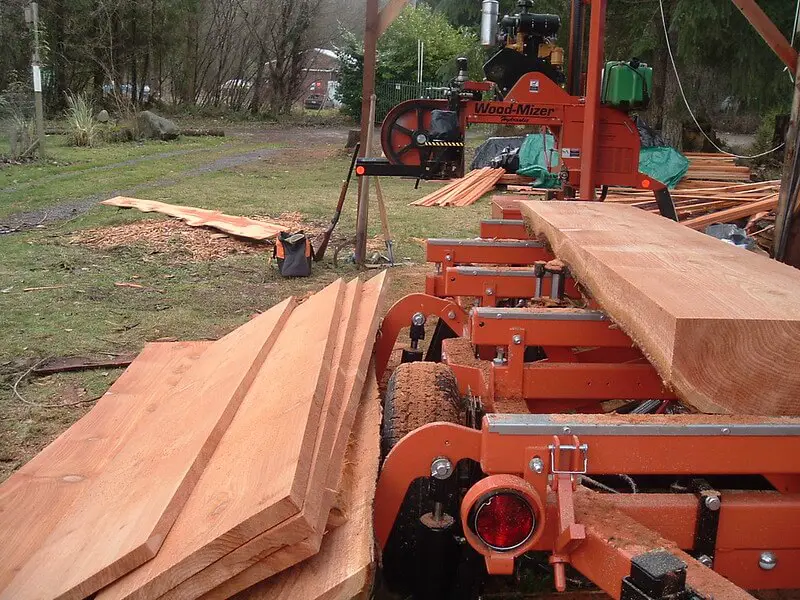Cedar is well-known for its beauty, distinct aroma, and versatility. Cedar belongs to a group of trees known as gymnosperms. Cedar is also a conifer just like pine. There are different types of cedar trees and each has its unique characteristics.
Here are some cedar species and their properties.
1. Eastern Red Cedar
The eastern red cedar is also known as the aromatic red cedar. It is mainly grown in eastern North America. Its wood exhibits the following characteristics;
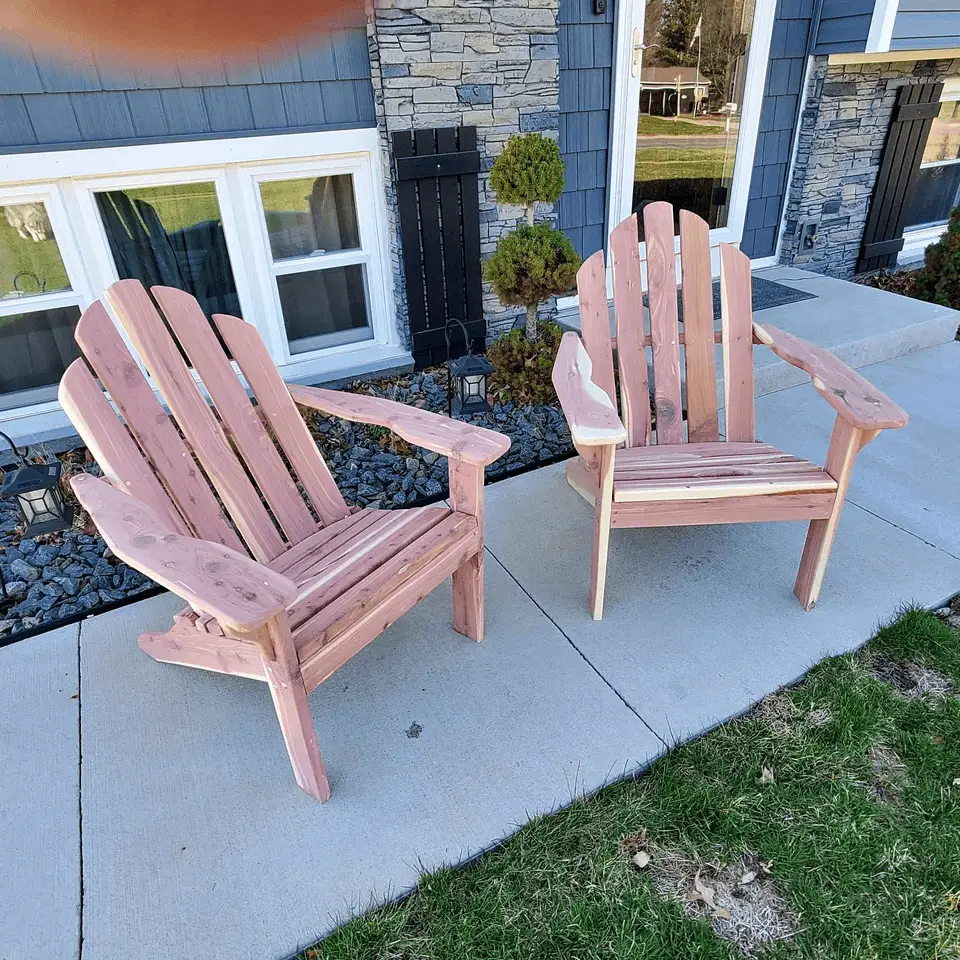
Mechanical Properties of Eastern Red Cedar
| Property | Score |
| Modulus of rupture | 8,800 lbf/in2 (60.7 MPa) |
| Elasticity modulus | 880,000 lbf/in2 (6.07 GPa) |
| Maximum crushing strength | 6,020 lbf/in2 (41.5 MPa) |
| Hardness | 900 lbf (4,000 N) |
| Shrinkage percentage | Radial: 3.1%, Tangential: 4.7%, Volumetric: 7.8%, T/R Ratio: 1.5 |
| Specific gravity (at 12% Moisture Content) | 0.47 |
| Average dried weight | 33 lbs/ft3 (530 kg/m3) |
Characteristics of Eastern Red Cedar Wood
- Appearance The eastern red cedar has a deep-purplish heartwood and a pale yellow sapwood. It has a straight grain with a fine, even texture.
- Durability This wood has excellent resistance to insect attacks and fungal decay just like most types of cedar discussed here.
- Workability Aromatic cedar tends to be knotty. Although the wood has good workability, the knots can affect its machining properties.
- Finishing The eastern red cedar finishes well. However, most wood workers to leave this wood unfished to preserve its aromatic scent.
- Odor Like the name suggests this wood has a distinct aroma. The scent repels insect making this wood ideal for making closets and chest linings.
- Allergies The dust produced by this wood causes skin and respiratory irritation.
2. Cedar of Lebanon
The cedar of Lebanon mainly grows in the Middle East. It’s also planted in parklands in the UK. The tree can grow up to 130ft tall and 7ft wide. Its wood has the following features;
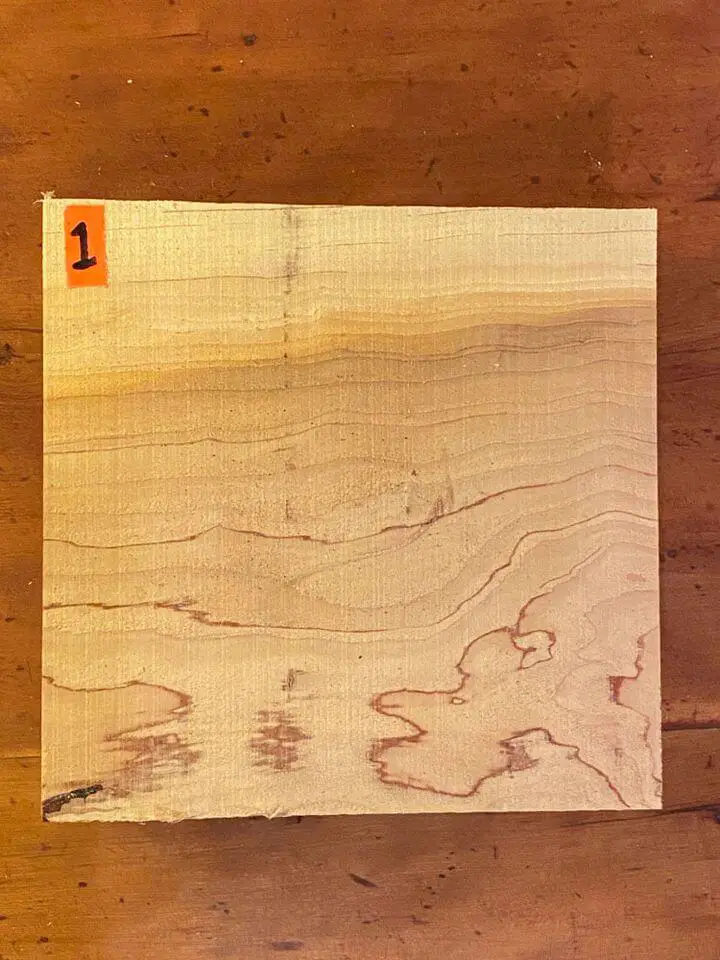
Mechanical Properties of Lebanese Cedar
| Property | Score |
| Modulus of rupture | 11,890 lbf/in2 (82 MPa) |
| Elasticity modulus | 1,465,000 lbf/in2 (10.1 GPa) |
| Maximum crushing strength | 6,090 lbf/in2 (42 MPa) |
| Hardness | 820 lbf (3,670 N) |
| Shrinkage percentage | Radial: 4.1%, Tangential: 6%,Volumetric: 10.4%, T/R Ratio: 1.5 |
| Specific gravity (at 12% Moisture Content) | 0.41 |
| Average dried weight | 32 lbs/ft3 (520 kg/m3) |
Characteristics of Lebanese Cedar Wood
- Appearance Lebanese cedar has a light reddish-brown heartwood and pale yellowish sapwood. It has a straight rain with a medium to coarse texture. The wood also has a low to moderate natural luster.
- Durability This wood is well-known for its durability. It’s been used in construction by ancient civilizations for many decades. In fact, wood from this tree was used to build the historical Solomon’s temple. The wood has a high resistance to decay and insect attacks.
- Workability It has good workability provided the wood doesn’t have knots or grain irregularities. The wood turns and glues nicely and has a good holding capacity for nails and screws.
- Finishing The Lebanese cedar finishes well with stains, varnish, paint, and polish.
- Odor It has a sweet scent and is used for making perfumes.
- Allergies Working with this wood can cause skin and respiratory irritation. Its dust can also cause asthma-like symptoms.
3. Port Oxford Cedar
These trees grow in the Pacific Northwest United States. They can grow up to 200ft tall and 6ft wide. Wood from the port oxford cedar has the following properties;
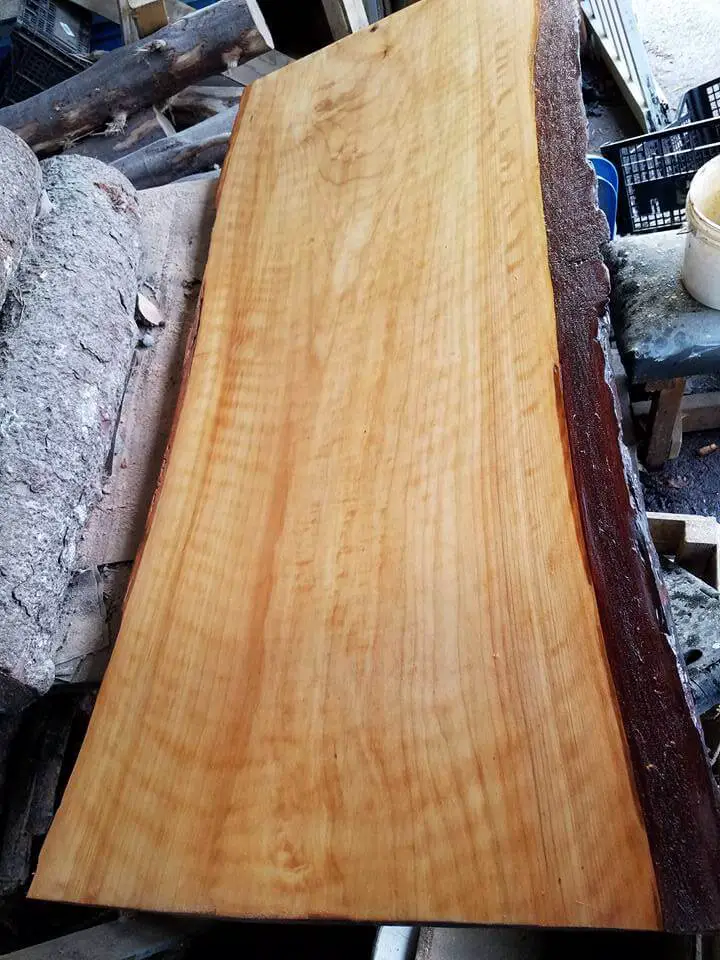
Mechanical Properties of Port Oxford Cedar
| Property | Score |
| Modulus of rupture | 12,290 lbf/in2 (84.8 MPa) |
| Elasticity modulus | 1,646,000 lbf/in2 (11.35 GPa) |
| Maximum crushing strength | 6,080 lbf/in2 (41.9 MPa) |
| Hardness | 590 lbf (2,620 N) |
| Shrinkage percentage | Radial: 4.6%, Tangential: 6.9%, Volumetric: 10.1%, T/R Ratio: 1.5 |
| Specific gravity (at 12% Moisture Content) | 0.42 |
| Average dried weight | 29 lbs/ft3 (465 kg/m3) |
Characteristics of Port Oxford Cedar Wood
- Appearance Its heartwood has a distinct yellowish or pinkish brown color and pale yellow-brown sapwood. The wood darkens when outdoor weather. It has a perfectly straight grain with a uniform, fine texture.
- Durability This wood is reported to be very durable. It has excellent resistance to acid corrosion and was used for storage battery separators during World War II. It’s also highly resistant to decay and insect attacks.
- Workability It has good workability with hand and machine tools. The wood also stains and finishes nicely.
- Odor The port oxford cedar has a ginger-like scent.
- Allergies Sawdust produced by this wood causes skin irritation, runny nose, and asthma-like symptoms. Prolonged exposure to dust can also result in kidney problems.
4. Alaska Cedar
The Alaskan cedar is mainly found in the northwest coast of North America. It exhibits the following characteristics;
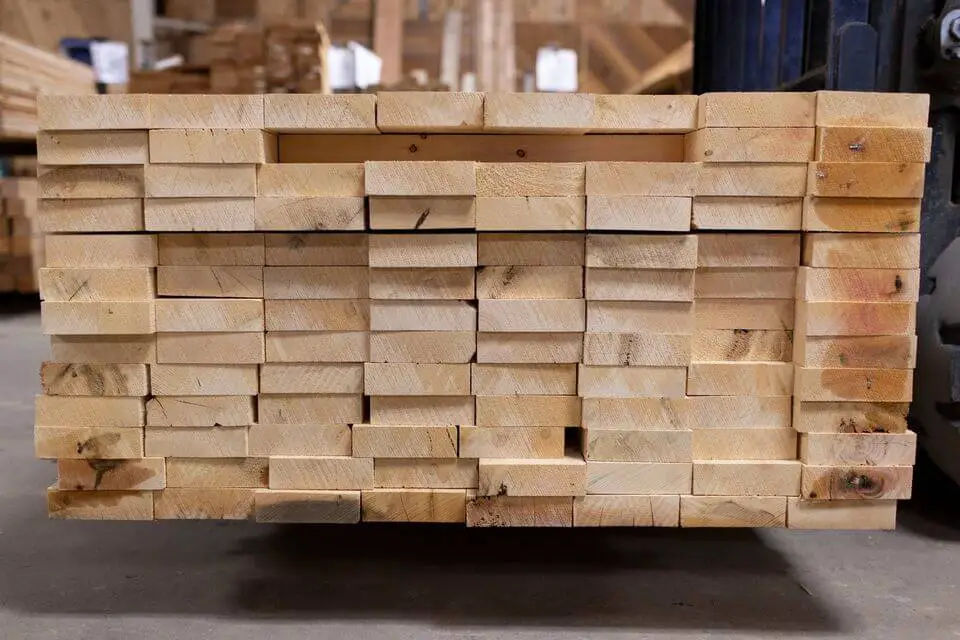
Mechanical Properties of Alaskan Cedar
| Property | Score |
| Modulus of rupture | 11,100 lbf/in2 (76.6 MPa) |
| Elasticity modulus | 1,420,000 lbf/in2 (9.79 GPa) |
| Maximum crushing strength | 6,310 lbf/in2 (43.5 MPa) |
| Hardness | 580 lbf (2,580 N) |
| Shrinkage percentage | Radial: 2.8%, Tangential: 6.0%, Volumetric: 9.2%, T/R Ratio: 2.1 |
| Specific gravity (at 12% Moisture Content) | 0.44 |
| Average dried weight | 31 lbs/ft3 (495 kg/m3) |
Characteristics of Alaskan Cedar Wood
- Appearance It has a light yellow heartwood and a whitish yellow sapwood. The wood has a straight grain with a uniform medium to fine texture. Sometimes the grain appears wavy.
- Durability It is very durable and has good resistance to decay and insect attacks.
- Workability The wood has good workability. However, the wood with wavy grain tends to tear out when being planned. The Alaskan cedar glues, stains, and finishes well. It also holds paint nicely.
- Odor Its scent is similar to that of raw potatoes.
- Allergies Dust produced by this wood cause’s skin irritation.
5. Incense Cedar
This tree grows in Western North America, mostly in California. Its properties are as follows;
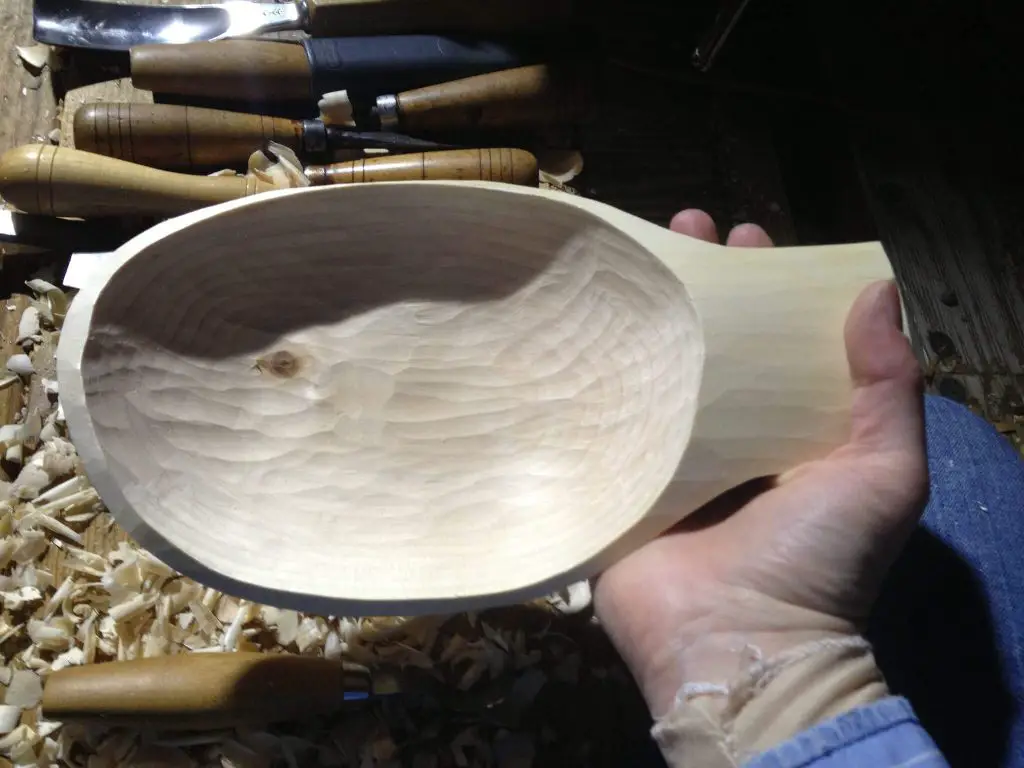
Mechanical Properties of Incense Cedar
| Property | Score |
| Modulus of rupture | 8,000 lbf/in2 (55.2 MPa) |
| Elasticity modulus | 1,040,000 lbf/in2 (7.17 GPa) |
| Maximum crushing strength | 5,200 lbf/in2 (35.9 MPa) |
| Hardness | 470 lbf (2,090 N) |
| Shrinkage percentage | Radial: 3.3%, Tangential: 5.2%, Volumetric: 7.7%, T/R Ratio: 1.6 |
| Specific gravity (at 12% Moisture Content) | 0.37 |
| Average dried weight | 24 lbs/ft3 (385 kg/m3) |
Characteristics of Incense Cedar Wood
- Appearance It has medium reddish to purplish brown heartwood. The sapwood has a light tan. The wood has a straight grain with a medium to fine texture.
- Durability These types of cedar have good resistance to decay.
- Workability It has good workability with hand and powered tools. The wood takes glue, stains, and paint well. It has more excellent dimensional stability than other cedar species.
- Odor This wood has a spicy odor and is mainly used for making pencils. It also has an acrid taste.
- Allergies Its dust is associated with skin irritation.
6. Western Red Cedar
The western red cedar mainly grows in Canada and has the following characteristics;
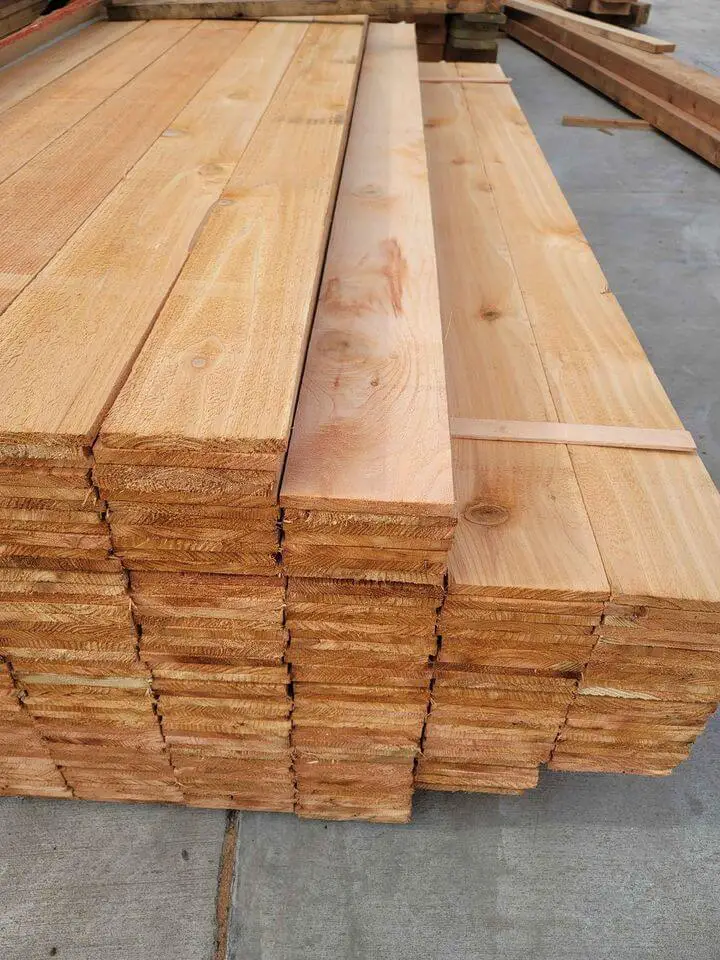
Mechanical Properties of Western Red Cedar
| Property | Score |
| Modulus of rupture | 7,500 lbf/in2 (51.7 MPa) |
| Elasticity modulus | 1,110,000 lbf/in2 (7.66 GPa) |
| Maximum crushing strength | 4,560 lbf/in2 (31.4 MPa) |
| Hardness | 350 lbf (1,560 N) |
| Shrinkage percentage | Radial: 2.4% Tangential: 5%Volumetric: 6.8%, T/R Ratio: 2.1 |
| Specific gravity (at 12% Moisture Content) | 0.33 |
| Average dried weight | 23.0 lbs/ft3 (370 kg/m3) |
| Stability ratio |
Characteristics of Western Red Cedar Wood
- Appearance The western red cedar has a distinct medium to dark brown heartwood. Its sapwood has a pale yellowish-white color. The wood has a straight grain with a coarse texture and a moderate natural luster.
- Durability This wood has good resistance to fungal decay. However, it has a relatively low resistance to insect attacks.
- Workability The western red cedar is very soft and therefore easy to work with. This wood dents and scratches very easily due to its soft nature. The wood glues and finishes well. It also has a good holding capacity for nails and screws but you must be careful not to use iron fasteners as they can stain the wood.
- Odor It has a strong, lingering scent.
- Allergies Working with this wood can result in eye, skin, and respiratory irritation. It can also result in asthma-like symptoms and nervous system problems.
7. Atlantic White Cedar
The Atlantic white cedars are found in the coastal regions of eastern US.
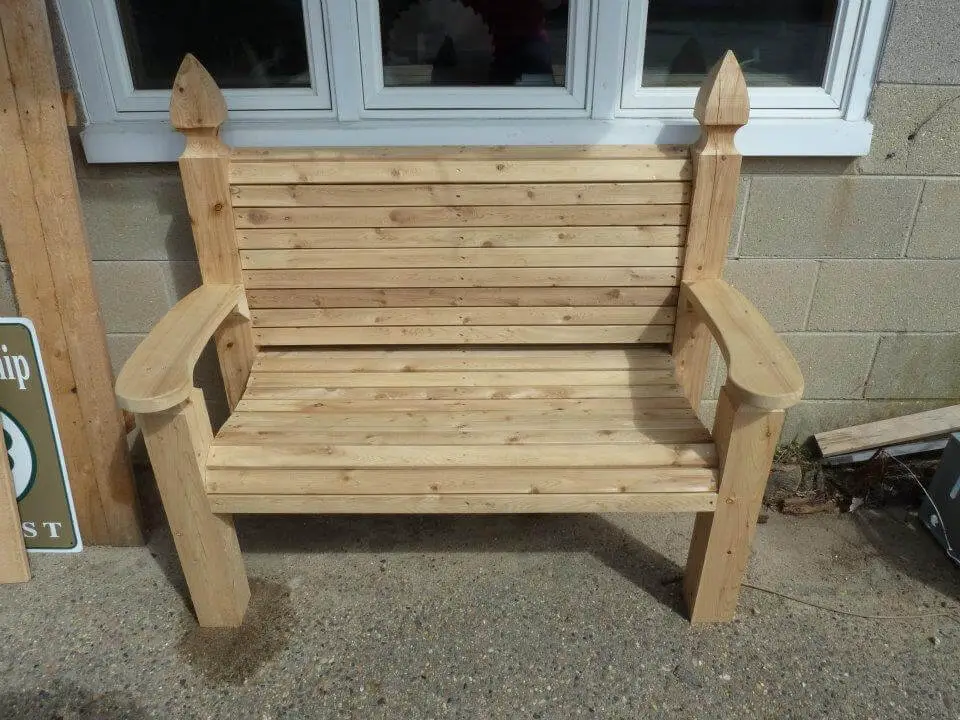
Mechanical Properties of Atlantic White Cedar
| Property | Score |
| Modulus of rupture | 6,800 lbf/in2 (46.9 MPa) |
| Elasticity modulus | 930,000 lbf/in2 (6.41 GPa) |
| Maximum crushing strength | 4,700 lbf/in2 (32.4 MPa) |
| Hardness | 350 lbf (1,560 N) |
| Shrinkage percentage | Radial: 2.9%, Tangential: 5.4%, Volumetric: 8.8%, T/R Ratio: 1.9 |
| Specific gravity (at 12% Moisture Content) | 0.32 |
| Average dried weight | 24 lbs/ft3 (380 kg/m3) |
Characteristics of Atlantic White Cedar Wood
- Appearance It has a light reddish-brown heartwood and a pale yellow-brown sapwood. The grain is straights and has a fine and uniform texture.
- Durability Just like other types of cedar above Atlantic white cedar has excellent resistance to fungal decay.
- Workability The wood has good workability with hand and machine tools. It also stains, glues, and finishes nicely.
- Odor The wood has a sweet and aromatic scent.
- Allergies Its Dust Is Reported To Cause Skin Irritation.
8. Northern White Cedar
These trees are found in Northeastern North America. They have the following characteristics;
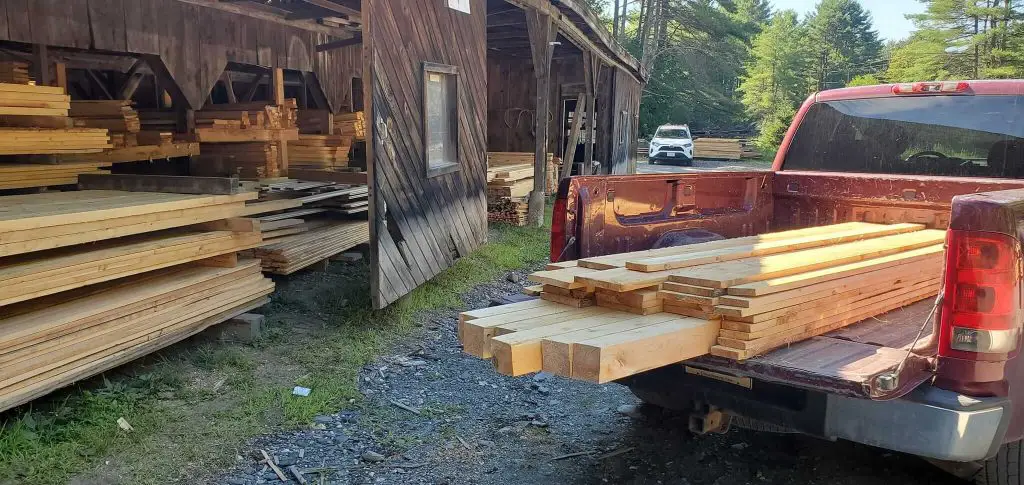
Mechanical Properties of Northern White Cedar
| Property | Score |
| Modulus of rupture | 6,500 lbf/in2 (44.8 MPa) |
| Elasticity modulus | 800,000 lbf/in2 (5.52 GPa) |
| Maximum crushing strength | 3,960 lbf/in2 (27.3 MPa) |
| Hardness | 320 lbf (1,420 N) |
| Shrinkage percentage | Radial: 2.2%, Tangential: 4.9%,Volumetric: 7.2%, T/R Ratio: 2.2 |
| Specific gravity (at 12% Moisture Content) | 0.31 |
| Average dried weight | 22.0 lbs/ft3 (350 kg/m3) |
| Stability ratio |
Characteristics of Northern White Cedar Wood
- Appearance It has a light reddish brown heartwood and a nearly white sapwood. The grain is usually straight and has a fine, even texture. Additionally, the wood has a moderate natural luster.
- Durability The wood is very durable in regard to decay and insect attacks.
- Workability It has good workability with hand and powered tools. However, the wood’s soft nature affects its screw-holding capabilities. This wood glues and holds paints well.
- Odor It has a pungent but mild aroma.
- Allergies Its sawdust results in skin irritation and runny nose. The wood contains plicatic acid which causes asthma.
How to Maintain Cedar Wood
Cedar is naturally resistant to decay and insect attacks. The wood also holds up to outdoor elements nicely.
However, exposure to UV rays causes the wood to weather to a gray color. Fortunately, there are ways to maintain the natural color of this beautiful wood. You can protect your wood by staining, painting, or oiling it.
What Makes Cedar Wood Popular?
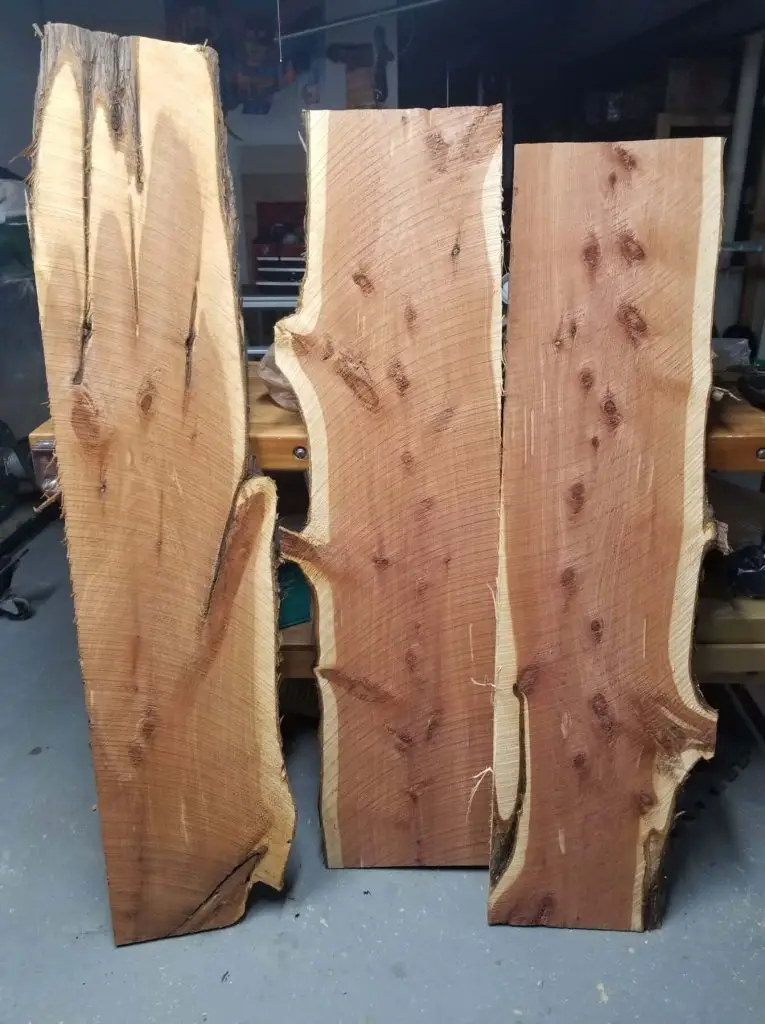
There are various properties that set cedar apart from its softwood counterparts. These are;
Distinct Scent
The distinct aroma produced by this wood is one property that sets it apart from other woods. This property gives cedar an edge over other softwoods regarding insect attacks.
Durability
Cedar is more durable than most softwoods such as pine. It has good resistance to outdoor elements, fungal decay, and insect attacks.
Read about Ipe wood
Conclusion: Types of cedar woods
Cedar is softwood with over ten different species. The species exhibit similar properties such as distinct aroma, good workability, good resistance to decay and insect attacks, and excellent weathering abilities.
Cedar is naturally beautiful and can be left without a finish. However, finishing may be appropriate if you want the wood to retain its natural color. The wood finishes well with stain, paint, and oil.
This wood is more popular than softwoods such as pine and fir, here’s why;
· Cedar has distinct aroma that increases its resistance to insects.
· It is more durable than other softwoods.

